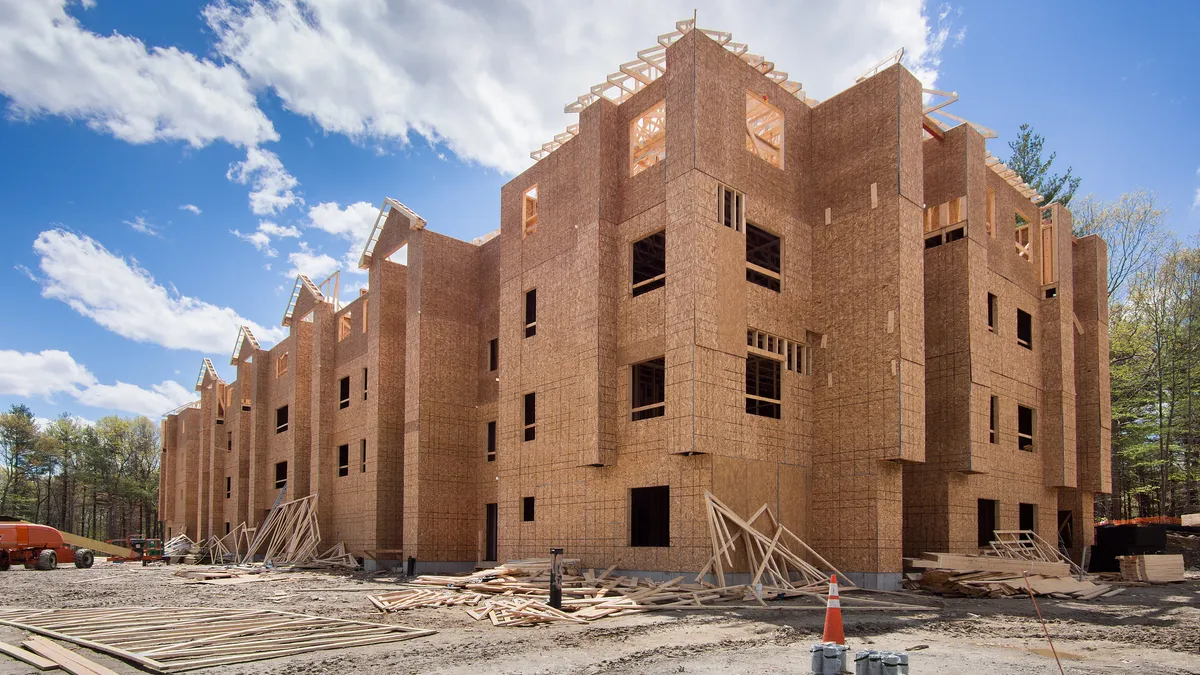The highest inflation rate in a generation helped to drive record annual growth for multifamily revenue, expenses and net operating income last year.

This significant uptick demonstrates that the multifamily industry is not immune to market volatility, and proactive financial strategies are crucial to navigating such conditions effectively, according to a new report from Thirty Capital Performance Group, a division of Charlotte, North Carolina-based commercial real estate investment firm Thirty Capital.
The numbers also show significant dispersion in performance on a year-to-year basis and across multifamily subtypes and markets, highlighting the need for a nuanced approach to address regional and property-specific challenges, according to Thirty Capital CEO Robert J. Finlay.
Here, Finlay talks with Multifamily Dive about the growth of expenses and revenue and the future outlook for the multifamily industry.
This interview has been edited for brevity and clarity.
MULTIFAMILY DIVE: What are some of the top headwinds that multifamily executives are facing?
ROBERT J. FINLAY: Multifamily executives are grappling with several significant challenges in the current market. Property insurance costs, which surged by 16.48% in 2022, have been growing significantly faster than other operating expenses, driven by increased payouts on natural disasters, particularly evident in regions like Florida and Texas.
The tight labor market is another headwind for the industry. With a limited pool of available workers, payroll and repair costs have escalated, adding to operational expenditures. The increased difficulty in finding and retaining skilled personnel can strain budgets and affect overall property maintenance and management efficiency.
Furthermore, the revaluation of properties by municipalities, resulting in higher taxes, and the impact of inflation on consumer purchasing power pose additional challenges for multifamily executives.
What can multifamily pros do to alleviate them?
Since many of these challenges are driven by external economic factors, complete mitigation may be challenging. The best guidance for operators is proactively managing expenses by identifying cost-saving opportunities, negotiating favorable insurance rates and optimizing property management practices.
It's essential to strike a balance between cost containment and maintaining the attractiveness of rental properties to tenants to ensure portfolios have long-term sustainability and competitiveness. Additionally, staying agile and responsive to evolving market conditions will be key to addressing these multifaceted challenges.
What do you predict for next year?
Looking ahead, it is reasonable to expect that multifamily executives will continue to face expense-related challenges in the coming year. The three challenges discussed previously – rising insurance costs, labor market tightness and increased taxes – will likely persist. Given inflation and rising interest rates, we expect revenue growth to revert to historical averages or even decline, posing further financial constraints on the industry.
In these challenging economic times, the ability to navigate these hurdles effectively will distinguish skilled owners and operators from the rest. To maintain a competitive edge, stakeholders must leverage resources like comprehensive data, conduct thorough research and stay informed about market trends.
What other trends do you see coming to the industry?
In the year ahead, we expect to continue to see new construction and upgrades of lower-income properties to address the long-term housing shortage. Another emerging trend is multifamily stakeholders increasingly relying on data and technology to boost efficiency, meet renter demands, enhance operations and make strategic investment decisions.
By harnessing the power of data, multifamily professionals gain a valuable element of foresight and predictability, providing them with a competitive edge in an environment marked by rising expenses and economic uncertainty.










